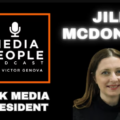The buzz south of the border these days includes initial learnings related to Programmatic TV (PTV). I have a planning bent (or perhaps I’m a ‘bent’ planner?!) and from my perspective, the opportunities sound exciting!
PTV is currently defined as “an automated, technology-driven method of buying and delivering traditional TV ads”. This is being looked at from a broader perspective by some to include video on demand (VOD) and addressable TV. The excitement that is brewing relates to opportunities for all TV.
As planners, we thrive on looking at qualifying the target group as best we can to match the client’s objectives and laying out media plans and buying parameters to strategically reach prospective customers. Some media allow us to carry this through to implementation and certainly data available via current research resources, Numeris surveys and Return to Sample, for example, allow this to some degree for TV. Yet the actual buying target currency of traditional TV continues to require a more generalized approach, where the honing of the target is taken back to just gender and age commonalities and a bit of the ‘wind is taken out of the sails’ for this planner.
So with PTV, the idea that you can target your audience on a more holistic or ‘circular’ basis, while they’re engaging with their favourite media, offers so much more than the traditional ‘linear’ TV buying.
The idea that you can drive incremental reach, across platforms, with smarter contextual-based buying and even the prospect of targeting messages to individual households (addressable TV) opens up the potential for higher engagement and the strengthening of relationships between brands and prospective consumers.
Essentially, TV is bought on richer audience attributes and not restricted to basic gender and age demos, allowing for strategic targeting of your broadcast message. Traditional parameters of buying on CPM or GRPs are available and methodology allows for ranking of networks and day-parts or both. Viewership forecasts are available for the qualified target, as are post analyses based on the currency that is available and agreed to (for the most part this is Nielsen in the U.S.).
It is early days and how this lands in Canada is yet to be determined. Questions of currency and scalability need to be resolved but we understand discussions are under way.
Laura T.


